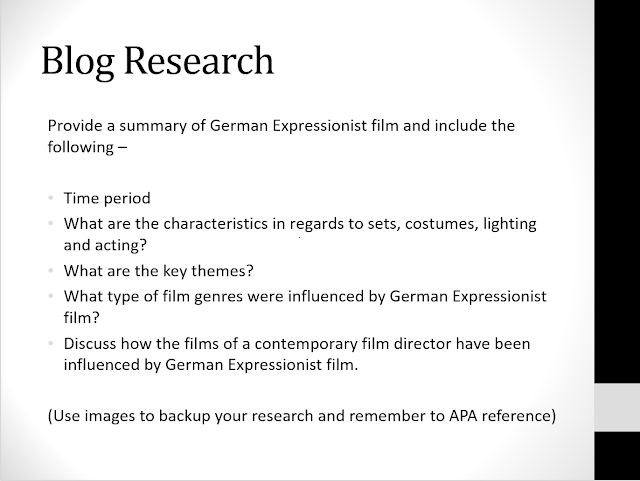The time period for German Expressionism is between 1919-1931.
The characteristics for German Expressionist film are
- Unnatural set design
- Distorted and exaggerated angles
- Composition of unnatural place
- use of oblique (slanting) angles and non parallel lines
- a moving and subjective camera (POV)
- Unnatural costumes, hairstyles and makeup
- Highly stylized acting
The key themes are
- Madness
- Criminality
- Fracturing of identity
German Expressionist film influences film genres such as psychological drama, horror and film noir.
The film, Pan's Labyrinth of contemporary film director Guillermo del Toro, was inspired by German Expressionism. This can be seen in the dark, twisted tale of Pan's Labyrinth paired with its equally dark, twisted visuals.
The set design in unnatural, filled with creepy and intersting characters such as this guy:

and Pan

The set design
References
Kundsen, T (2016, August 12) Watch: How German Expressionism Influences Cinemas Dark Side.[Blog Post] Retrieved from
https://nofilmschool.com/2016/08/german-expressionism
del Toro, G (2006) Pan's Labyrinth [Motion Picture] Spain: Telecino Cinema, Estudios Picasso, Tequila Gang, Esperanto Filmoj, Sententia Entertainment
https://nofilmschool.com/2016/08/german-expressionism
del Toro, G (2006) Pan's Labyrinth [Motion Picture] Spain: Telecino Cinema, Estudios Picasso, Tequila Gang, Esperanto Filmoj, Sententia Entertainment

















